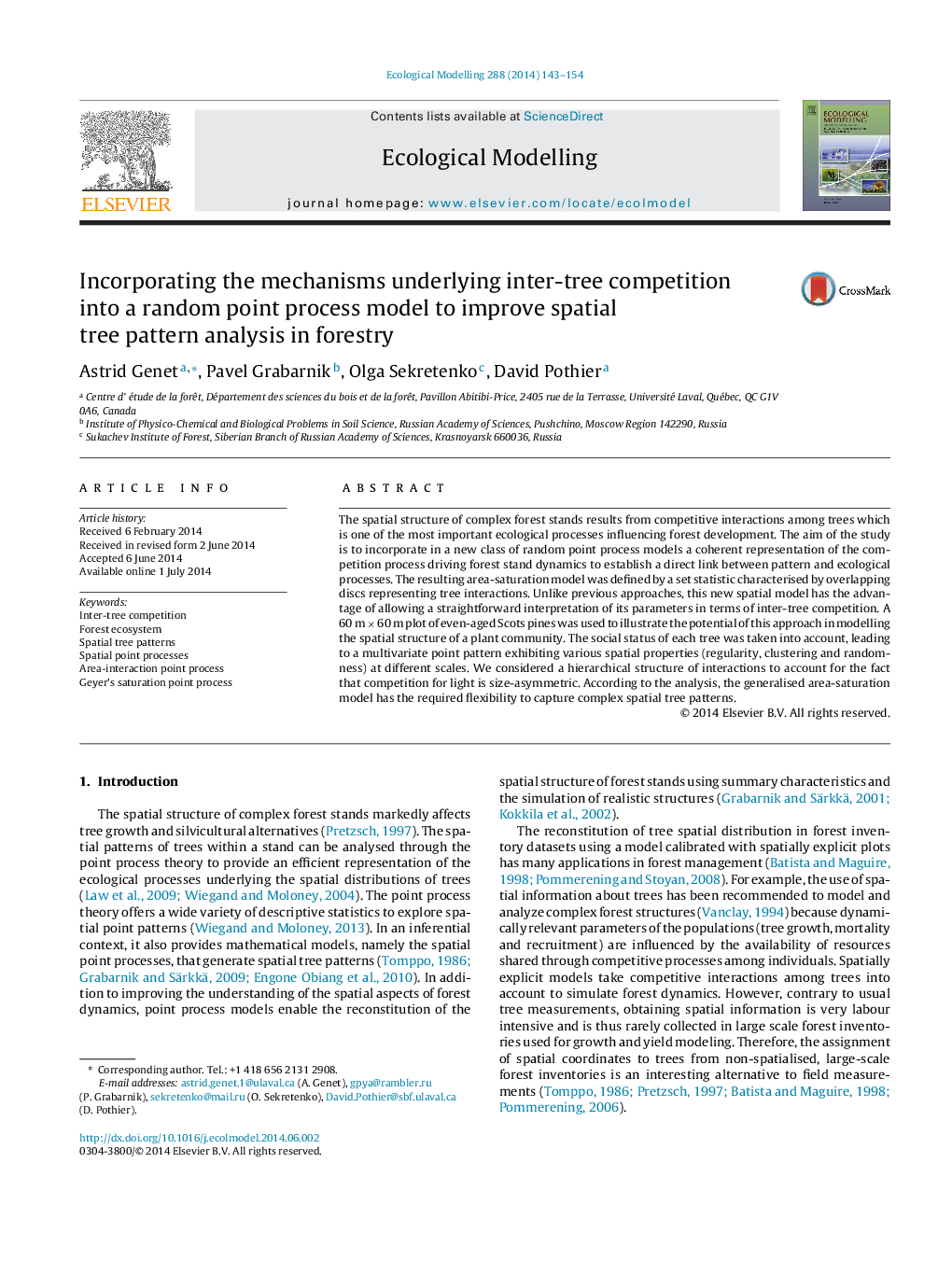| کد مقاله | کد نشریه | سال انتشار | مقاله انگلیسی | نسخه تمام متن |
|---|---|---|---|---|
| 4375905 | 1617458 | 2014 | 12 صفحه PDF | دانلود رایگان |
• We introduce a coherent representation of tree interactions in a new class of point processes.
• Model parameters can be directly interpreted in terms of inter-tree competition.
• We establish a direct link between pattern and processes.
• We illustrate the potential of this approach in modeling spatial tree patterns.
• We show that the model has the required flexibility to capture complex spatial features.
The spatial structure of complex forest stands results from competitive interactions among trees which is one of the most important ecological processes influencing forest development. The aim of the study is to incorporate in a new class of random point process models a coherent representation of the competition process driving forest stand dynamics to establish a direct link between pattern and ecological processes. The resulting area-saturation model was defined by a set statistic characterised by overlapping discs representing tree interactions. Unlike previous approaches, this new spatial model has the advantage of allowing a straightforward interpretation of its parameters in terms of inter-tree competition. A 60 m × 60 m plot of even-aged Scots pines was used to illustrate the potential of this approach in modelling the spatial structure of a plant community. The social status of each tree was taken into account, leading to a multivariate point pattern exhibiting various spatial properties (regularity, clustering and randomness) at different scales. We considered a hierarchical structure of interactions to account for the fact that competition for light is size-asymmetric. According to the analysis, the generalised area-saturation model has the required flexibility to capture complex spatial tree patterns.
Journal: Ecological Modelling - Volume 288, 24 September 2014, Pages 143–154
